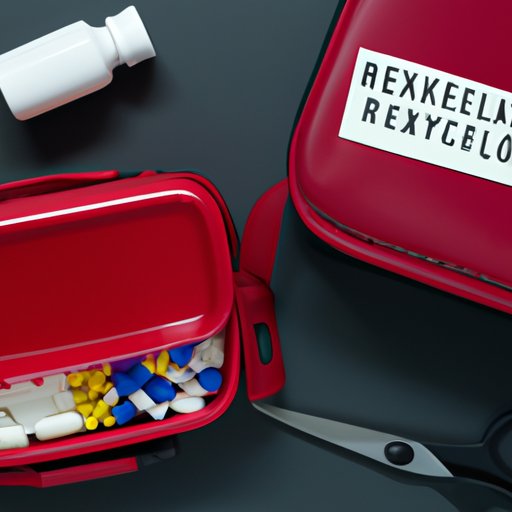
Introduction
For many people, traveling with prescription medication can be a source of stress and confusion. Without proper guidance, it can be difficult to know what medications are allowed on planes and how to properly pack and carry them. This article will explore the various considerations and guidelines for traveling with prescription medication so that you can travel confidently and safely with your medications.
Navigating Air Travel with Prescription Medication: What You Need to Know
Before embarking on a trip with prescription medication, there are several key considerations to keep in mind. Planning ahead is incredibly important in order to minimize confusion and limit potential issues at the airport. It’s also important to understand that medications may be subject to stricter screening procedures. Familiarizing yourself with TSA guidelines is the best way to ensure a smooth and stress-free travel experience.
Traveling with Prescriptions? Here’s Your Guide to TSA Regulations
TSA regulations regarding medication can be quite detailed, but it’s important to understand them in order to properly travel with your prescriptions. In general, most medications are allowed on planes as long as they are in approved containers and can be screened by the TSA. It’s important to keep in mind that certain types of medications, such as those that require refrigeration or needles, may be subject to additional screening and packing requirements.
When traveling with prescription medication, it’s important to carry documentation such as prescription labels or doctor’s notes to show TSA officials if necessary.
The Do’s and Don’ts of Bringing Prescription Medication on a Plane
To ensure that you have a smooth travel experience, there are certain things you should and should not do when bringing medication on planes. One common mistake people make is failing to properly declare their medications at security checkpoints. It’s also important to avoid packing medication in checked baggage, as this can lead to potential issues with lost or delayed baggage.
If you’re traveling internationally, it’s important to familiarize yourself with customs regulations regarding medications. Some medications that are legal in the United States may be banned in other countries, so it’s important to research these regulations ahead of time.
Flying with Medication: Tips for Safe and Easy Travel
There are several tips for ensuring safe and easy travel with medication. When packing medication, it’s important to keep it in a carry-on bag and to clearly label all medication containers. If you’re traveling with liquid medication, it’s important to remember the 3-1-1 rule (containers must be 3.4 ounces or less and must be placed in a clear, quart-sized bag).
In the event of delays or cancellations, it’s important to have a backup supply of important medications on hand.
Understanding TSA Guidelines for Prescription Meds on Flights
TSA guidelines for prescription medications can be quite detailed, but it’s important to understand what to expect when going through security screenings. It’s important to note that medications are typically subject to additional screening, so it’s important to allow extra time at the airport.
Additionally, if you have any liquid medications, you’ll need to follow the 3-1-1 rule and inform TSA officers at the security checkpoint that you have liquid medications in your carry-on bag.
How to Pack and Carry Prescription Medication for Air Travel
Properly packing and carrying your prescription medication is crucial for a safe and stress-free travel experience. It’s important to keep all medication in their original containers, properly labeled, and to pack them in a carry-on bag. If you have any liquid medications, it’s important to follow the 3-1-1 rule and to inform TSA officers at the security checkpoint.
If you’re traveling with emergency medication such as an EpiPen, it’s important to keep it on your person rather than in your carry-on bag. If you’re concerned about carrying medication with you, shipping options are also available.
Conclusion
Traveling with prescription medication can feel overwhelming, but by understanding TSA guidelines, planning ahead and packing properly you can travel confidently and safely. Whether you’re traveling domestically or internationally, following appropriate guidelines and travel tips can ensure that you have a stress-free and enjoyable travel experience.





